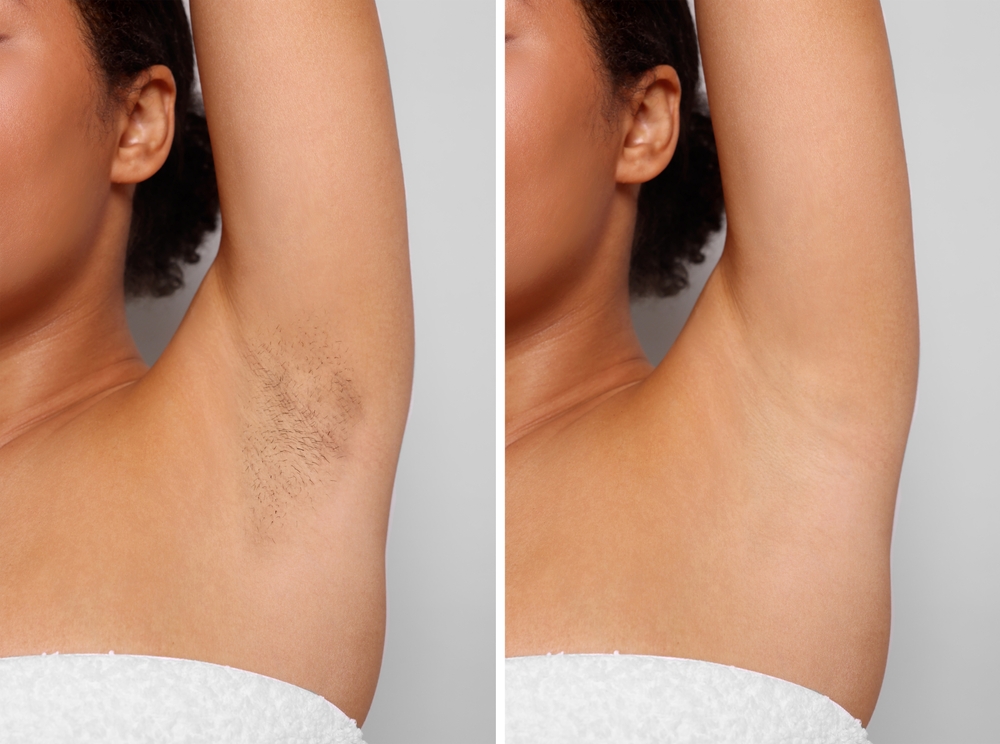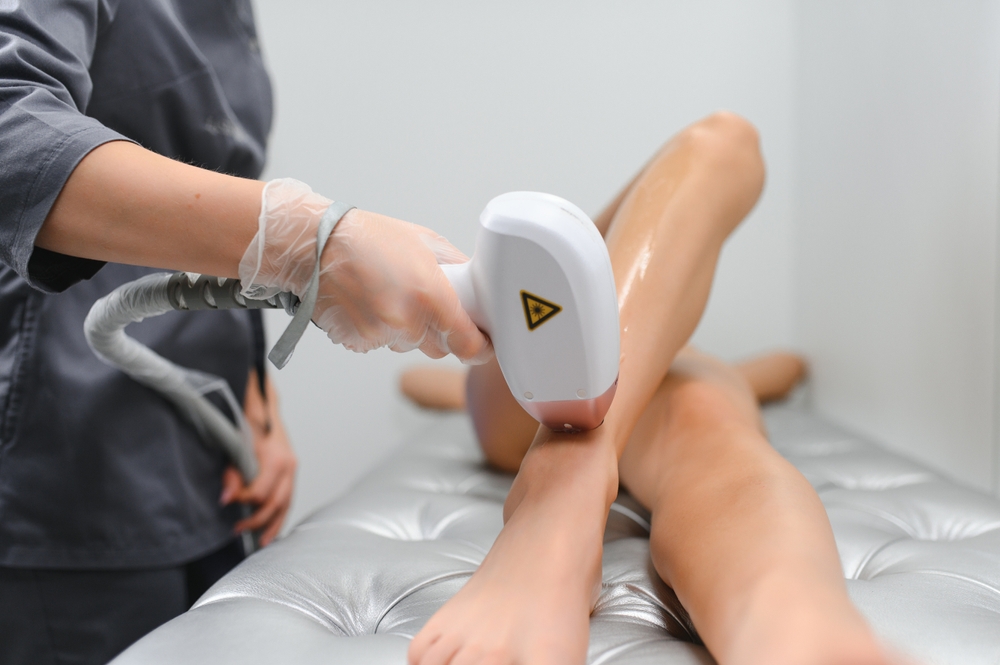The simple answer is no, an IPL laser cannot remove hair permanently – but it can dramatically reduce hair growth, often giving results so long-lasting they feel permanent for many people.
Unwanted hair has been a grooming challenge for centuries. From ancient sugar waxing rituals to today’s advanced light-based technology, we’ve always searched for ways to keep skin smooth with less effort. Shaving, waxing, threading, and depilatory creams are still popular, but they come with their frustrations: stubble, irritation, and the endless cycle of regrowth. In recent years, IPL laser hair removal has emerged as one of the most effective solutions for people seeking freedom from the daily grind of hair removal. But what’s the truth behind the promise?
Let’s break it down.
What Exactly Is IPL?
IPL stands for Intense Pulsed Light. It’s not a single laser beam, but rather a broad spectrum of light wavelengths delivered in short, controlled pulses. These pulses target the melanin (pigment) in the hair follicle. When absorbed, the light converts into heat, damaging the follicle’s ability to produce new hair.
Unlike traditional medical lasers, which use one focused wavelength, IPL disperses multiple wavelengths across a larger area. This makes treatments quicker and versatile for different body zones.
How It Differs From Laser Hair Removal
- Laser: Uses a single, precise wavelength. Typically more powerful, often found in clinics.
- IPL: Uses a broader light spectrum. Effective for a wide range of people, with many safe home-use devices now available.
Both work on the same principle: targeting pigment in the hair follicle to disrupt growth.
Why IPL Is Called “Long-Term Reduction”
The phrase “permanent hair removal” is misleading. No technology – not even medical-grade lasers – can guarantee that hair will never grow back. Instead, the scientific community describes results as “long-term hair reduction”.

Here’s why:
- Hair grows in cycles. Only hairs in the active growth phase (anagen phase) can be successfully targeted. Others in resting or shedding phases aren’t affected until they cycle back into growth.
- New follicles can activate. Hormones, ageing, or certain medical conditions can trigger dormant follicles to start growing hair again, even in previously treated areas.
- Maintenance is needed. Most people enjoy smooth results for months or years but require top-up sessions occasionally to keep regrowth at bay.
So, while IPL won’t remove every single hair forever, it can make skin dramatically smoother with far less visible regrowth – and for many, that feels like a permanent solution.
Who Gets the Best Results?
Not everyone responds to IPL in the same way. The treatment works best when there’s a clear contrast between the colour of the hair and the skin.
- Most effective: Light to medium skin tones with dark hair.
- Less effective: Very fair hair (blonde, grey, red) because there’s little melanin for the light to target.
- Caution: Very dark skin tones may be at higher risk of burns or pigmentation changes, though modern devices now offer settings to improve safety.
Many of the best IPL devices include skin sensors that adjust the intensity automatically, making it safer and more effective across a wider range of users.
What Does Treatment Involve?
Whether done at a salon or with a home device, the process is straightforward:
- Shave the area first. Unlike waxing, you don’t want to pull the hair out by the root. Shaving leaves the follicle intact for the light to target.
- Select the intensity. Professional machines and advanced home devices allow you to adjust settings based on your skin tone and comfort.
- Apply the light pulses. Place the handset against your skin and trigger the flash. You’ll feel a quick, warm sensation – some describe it like the snap of a rubber band.
- Repeat regularly. For best results, initial treatments are usually done every two weeks, then spaced out to monthly or occasional top-ups.
How Long Until You See Results?
Patience is key. Most people start noticing reduced regrowth after 3–4 sessions, with significant results after 6–8. Full courses typically take around 12 weeks, followed by maintenance as needed.
The beauty of IPL is cumulative improvement: each session progressively weakens follicles, so over time, hair becomes finer and sparser until in some places it may stop growing altogether.
Advantages of IPL Over Other Methods

There’s a reason IPL has become such a go-to choice. Compared to traditional methods:
- ✅ Long-lasting results – months of smoothness after a course.
- ✅ Less irritation – no razor burn, wax strips, or ingrown hairs.
- ✅ Cost-effective – a good home device pays for itself compared to salon visits.
- ✅ Convenient – can be done at home in minutes.
- ✅ Skin benefits – some users notice improved skin tone and reduced pigmentation as a side benefit.
Are There Any Downsides?
Like all treatments, there are considerations:
- ❌ Results vary depending on hair and skin type.
- ❌ It’s not instant – takes weeks to build up effect.
- ❌ Maintenance is required – top-ups prevent regrowth.
- ❌ Sensitive areas may feel uncomfortable.
- ❌ Not suitable for everyone (pregnant women, certain skin conditions, or those with very light hair should avoid).
Professional vs At-Home IPL
Twenty years ago, IPL was strictly a clinic treatment. Now, the market is full of devices designed for safe home use. The best IPL models have clinical backing, adjustable settings, and safety features like skin sensors and cooling technology.
- Clinics: More powerful, faster results, supervised by professionals.
- Home devices: Lower intensity, but convenient, discreet, and affordable.
Many people now combine the two – starting with professional sessions, then maintaining results at home.
The Emotional Side of IPL
It’s not just about smooth legs or underarms. For many, IPL is life-changing:
- Women dealing with PCOS-related excess hair find it boosts confidence.
- Men use it for back, chest, or beard shaping without constant irritation.
- Busy professionals love skipping daily shaving and waxing appointments.
The convenience and freedom from “hair anxiety” is one of the biggest reasons people stick with it.
Can You Really Be Hair-Free Forever?
Here’s the reality: while IPL laser hair removal won’t guarantee lifelong smoothness, it comes impressively close. After a full course, many people enjoy skin that stays virtually hair-free for months or years with only minimal upkeep. That’s why it’s considered one of the most effective and practical long-term solutions available today.
If you’re dreaming of smoother skin with less effort, IPL is the closest thing to permanent hair removal on the market. It may not stop growth forever, but for most people, it changes the way they think about hair removal for good.
Final Word
So, can an IPL laser remove hair permanently? Strictly speaking, no – but in practice, it can deliver silky, long-lasting results that feel just as good as permanent. By weakening hair follicles and dramatically reducing regrowth, IPL gives you smoother skin, fewer ingrown hairs, and the confidence of knowing your grooming routine is finally low-maintenance.
For many, it’s not about chasing the word “permanent,” but about enjoying freedom from the cycle of shaving and waxing. And in that sense, IPL really does live up to its reputation as one of the best IPL technologies in modern beauty.
Looking for curated ideas and inspiration? Discover more at Ravish Magazine, your UK lifestyle magazine.





